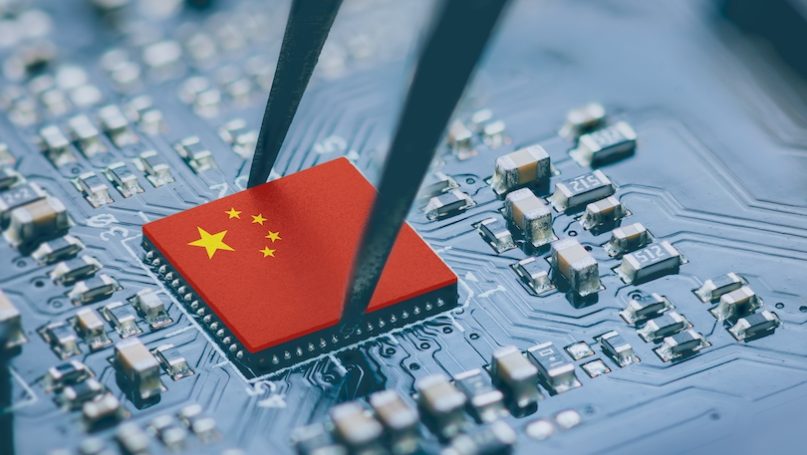
Recent developments in the US-China technology war have reshaped the future of the semiconductor industry which has become a hot-button issue in geopolitics. Perhaps, one of the most pressing expositions in the midst of the ‘chip war’ is a bunch of vulnerabilities in China’s semiconductor manufacturing capability and strength. While being the largest exporter of chips in the world, only 6.6% of its exports are manufactured by Chinese companies. Also, China’s trade deficit in integrated circuits and electronic components has risen from $135 billion in 2010 to $279 billion in 2020. Beijing’s dependency on semiconductor imports amid continuous pressure from Washington’s measures brings exposure to domestic deficiencies in the management of China’s semiconductor industry.
It all began with the US’s moves against Huawei regarding associated national security threats which led to the banning of the tech giant in 2019. Washington upped the ante in October last year when it imposed extensive export control measures by restricting its high-end chip exports to Chinese chipmakers. The latest round of export control restrictions enforced in December last year further strengthened the ‘chip war’ against China by adding YMTC and more than 30 other Chinese firms to the ‘Entity List’. To avoid the diversion of supply chains, and manipulation of rules by Chinese companies, US measures also extend to companies in other countries that trade with US companies. Not limiting its campaign to unilateral measures, the US is negotiating with the Netherlands, Japan and South Korea to enforce joint regulations on the export of chip-making equipment. The US now believes that the offensive choice of impairing China’s prospects in industries run on high-end chips will be more fruitful than aiming to retain leverage over China.
Beijing considers semiconductor chips as the cornerstone of its ambitions to achieve technological might. In an attempt to bring self-sufficiency to the chip sector, China’s policymakers have relied on several domestic tech companies. In December last year, Beijing announced the investment of US $145 billion to fund domestic chip makers via subsidies and tax credits. Such investments are expected to be channelled through a dedicated national semiconductor industry fund. Since the implementation of the fund in 2014, cases of corruption have arisen, indicating the involvement of several officials – including the CEO of Tsinghua Unigroup. After achieving several rounds of funding, Tsinghua Unigroup filed for bankruptcy in 2021. Though the fund has helped in raising firms like YMTC and SMIC, reckless spending from the fund – especially by local governments – has downplayed its efficiency.
The failure of HSMC, a $18.5 billion start-up in Wuhan in 2020 further highlights the deficiencies in Chinese system in sustaining business in the semiconductor industry. Other domestic chip manufacturers, including Quanxin Integrated Circuit Manufacturing, also suspended operations in 2021. Reports have also suggested that amid US export control measures, several chipmaker firms and Taiwanese executives have terminated their association with Chinese semiconductor firms.
Following these developments in the semiconductor industry, Beijing has signalled that it will recalibrate its approach. China is aware of the fact that a bucketload of cash would be insufficient to catch up with the capacity of players like Samsung or TSMC. So, rather than backing up firms, China is planning its investments in a more targeted way. This will include subsidizing the cost of equipment, investment in R&D, and building well-trained workforces.
In the short run, US measures may topple China’s advancement, but in the long run, the chokepoints set by the US measures may become less effective. It can also be argued that a chunk of Chinese companies, both big and small, will find ways to manipulate loopholes in US regulations if efforts to enforce a blockade are not effective. If the US aims to succeed in its intentions, it needs to ensure support and partnership with major chip producers in Europe and Asia. That remains uncertain as both South Korean industry leaders, and European officials, have slammed US measures as painful for the health of the global semiconductor industry. Thus, strategic and complete decoupling in global semiconductor supply chains is a hard task to achieve for the US. However, it is effectively forcing Beijing to struggle and regather resources and policies to prevent the faltering of its tech sector.
The actions of US regulators on the flow of high-end chips to China, and China’s vulnerabilities in its tech development ecosystem, offer two conclusions. First, China’s vision of achieving self-sufficiency in the semiconductor industry remains a distant dream. Second, to ensure export-based growth in the tech sector, China will have to continue to rely on imports from other countries, if not the US. Thus, in the midst of the export control measures, the domestic crisis brings a realization that the Chinese dream of achieving parity with competitors and eventually gaining self-reliance is still dependent on chip imports. In fact, the dream may become a nightmare if China fails to cope with the recent setbacks in its domestic sector.
Further Reading on E-International Relations
- Opinion – China and the US in Israel: The Lucrative Versus the Indispensable?
- Opinion – China’s Saudi-Iran Deal and Omens for US Regional Influence
- Opinion – The Future of the USA-China Trade War
- Opinion – Taiwan Could Be to China What Canada Is to the US
- The Complex Dance of US-China Climate Cooperation
- Opinion – Emerging Elements of a New US-China Cold War